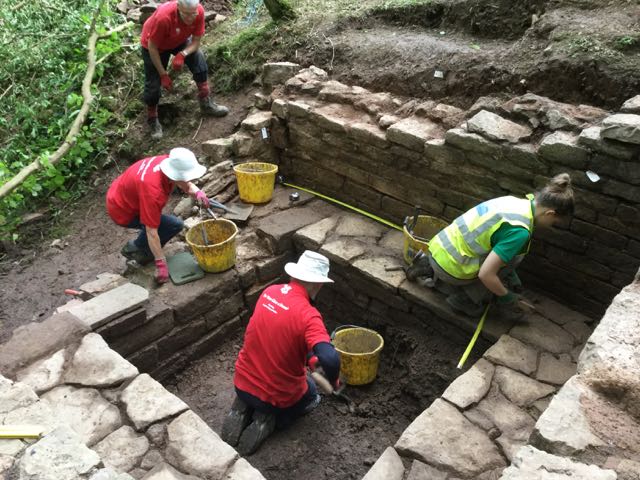
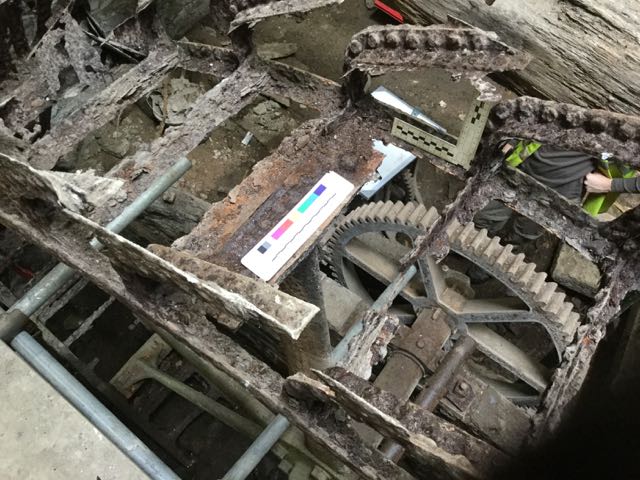
The Trust volunteers plus Sarah excavate the conduit house. Plenty of complex machinery to keep us occupied in the pump house
Whilst we were
away the contractors moved in on Hanwell to create better access to the
lower part of the garden along the newly named Via Archaeologica. In
addition some of the existing spoil was spread about a bit and some
topsoil and silting removed.
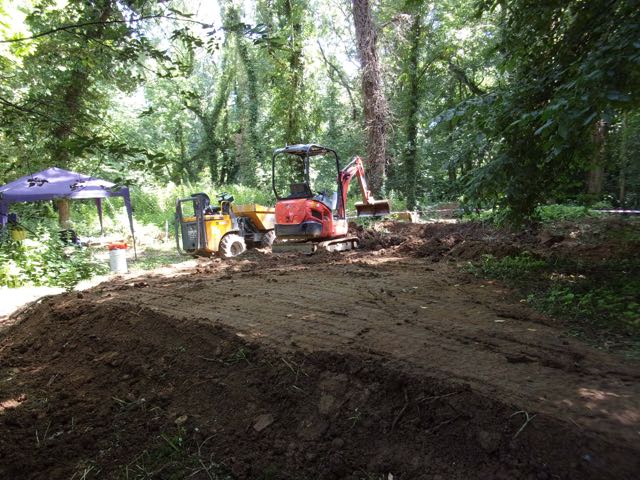
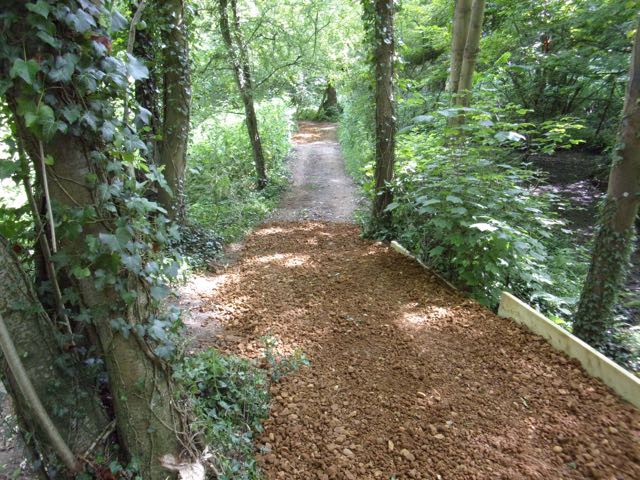
The digger and the dumper leveling spoil heaps and a view along the new super highway.
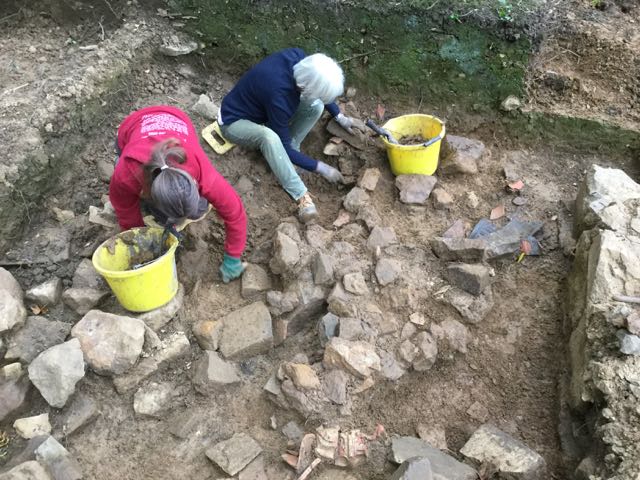
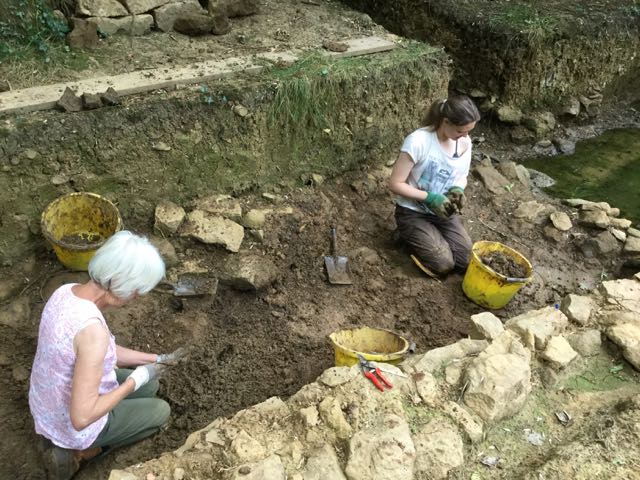
Back after a lengthy break Chris and Sarah tidy up the south trench ready for photography and drawing before moving on to the slowly drying out western section.
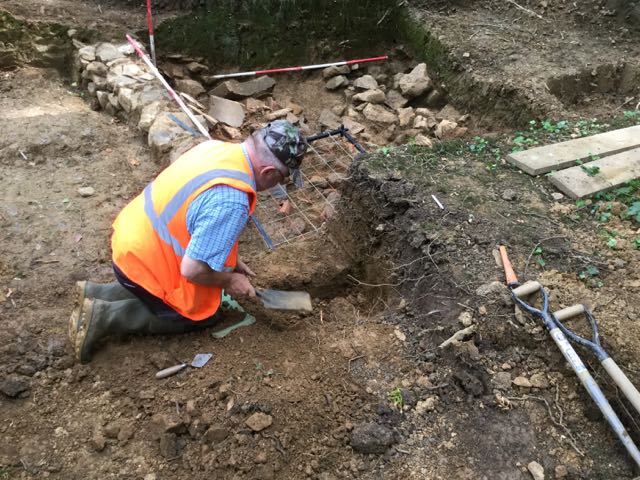
Peter follows up a metal detector signal and finds something big, not sure what yet so we cover it over pending the excavation of a larger area.
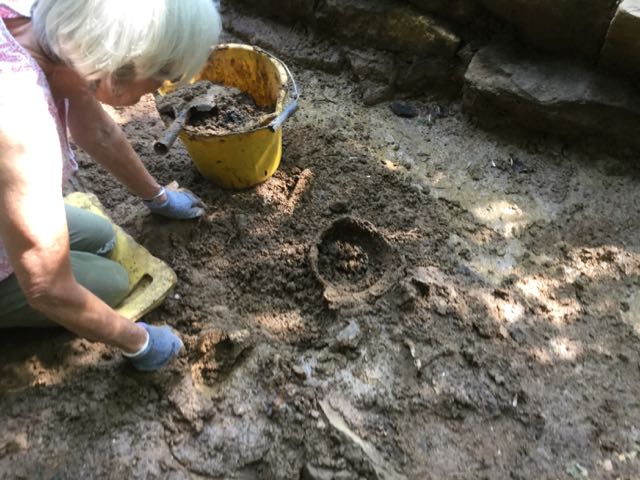
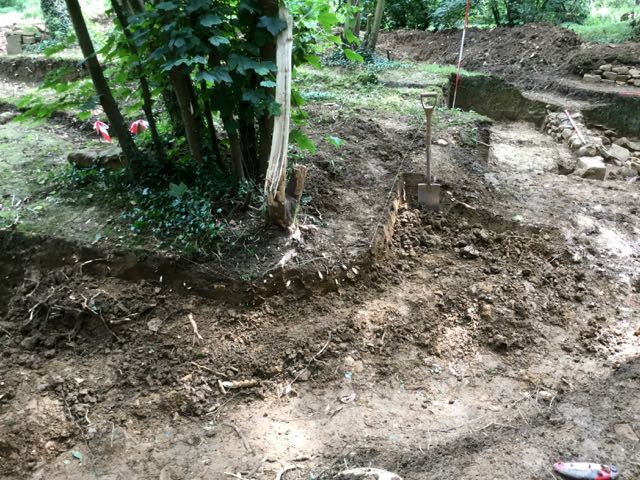
On the hottest day of the year so far Chris excavates a pot buried in cake mix and on the day after I dig all morning to tidy up section edges.
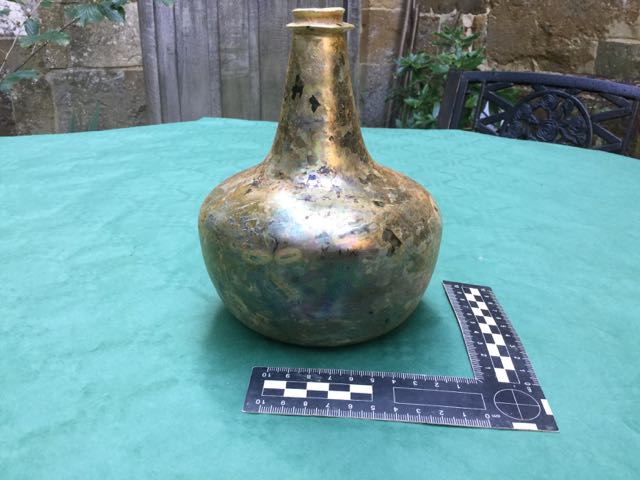
A marvelously intact seventeenth century wine bottle recovered by Christopher from the north trench.
As we moved towards the end of July rather unpredictable weather meant occasional storms with accompanying down pours which kept the lower parts of some trenches slightly soggy. So it was that our efforts were directed towards digging out the remaining largish area along the south west side of our polygonal enclosure.
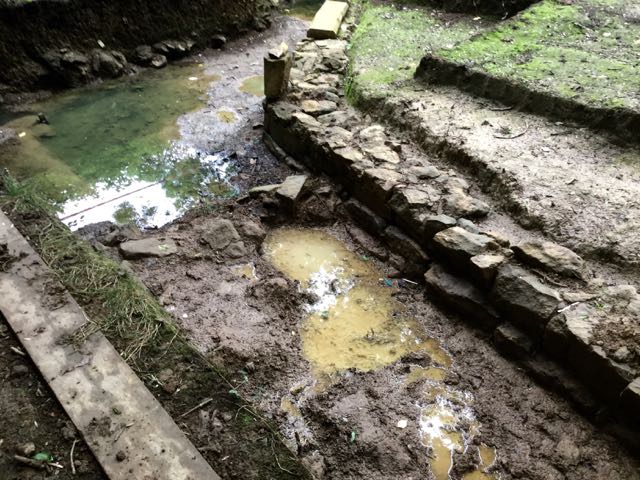
Flooded out again...
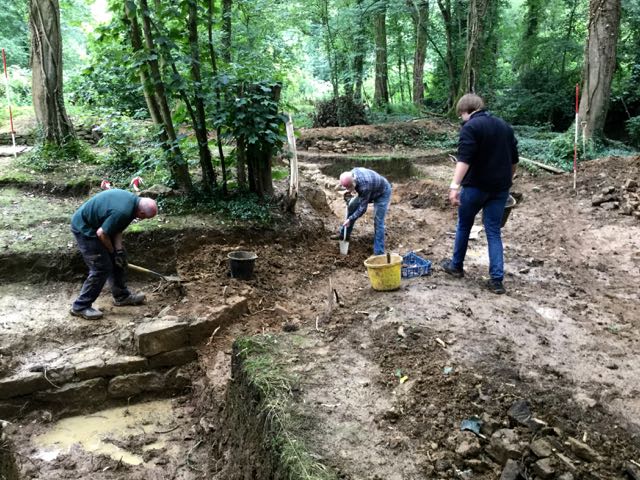
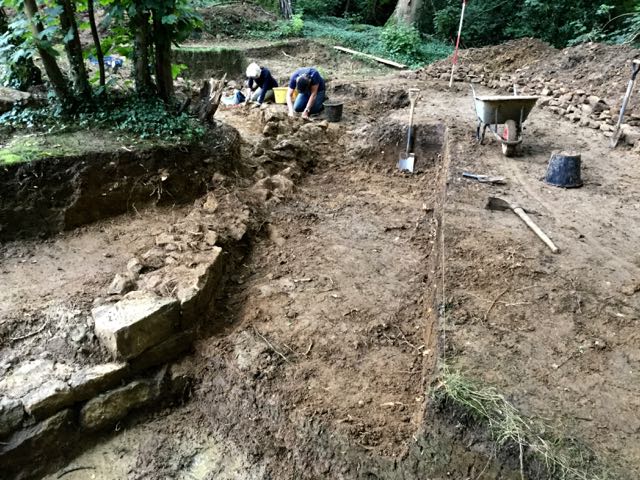
... so up top Peter, Ian and Toby cut a section edge. The next day Toby and Chris continue defining the line of the wall whilst some nameless hero digs out the rest of the area to be excavated.


The digger and the dumper leveling spoil heaps and a view along the new super highway.


Back after a lengthy break Chris and Sarah tidy up the south trench ready for photography and drawing before moving on to the slowly drying out western section.

Peter follows up a metal detector signal and finds something big, not sure what yet so we cover it over pending the excavation of a larger area.


On the hottest day of the year so far Chris excavates a pot buried in cake mix and on the day after I dig all morning to tidy up section edges.

A marvelously intact seventeenth century wine bottle recovered by Christopher from the north trench.
As we moved towards the end of July rather unpredictable weather meant occasional storms with accompanying down pours which kept the lower parts of some trenches slightly soggy. So it was that our efforts were directed towards digging out the remaining largish area along the south west side of our polygonal enclosure.

Flooded out again...


... so up top Peter, Ian and Toby cut a section edge. The next day Toby and Chris continue defining the line of the wall whilst some nameless hero digs out the rest of the area to be excavated.
Sarah, who had done sterling service earlier this summer, disappeared south in search of a holiday leaving me to recover her trowel known formally as Henriette, Trowelborn, First of Her Name, Worm Slayer, Trench Queen and Mother of Finds. Henriette was cleaned oiled and polished so that she could receive tribute from all those passing by.... what, doesn't everyone look after their trowel this way?
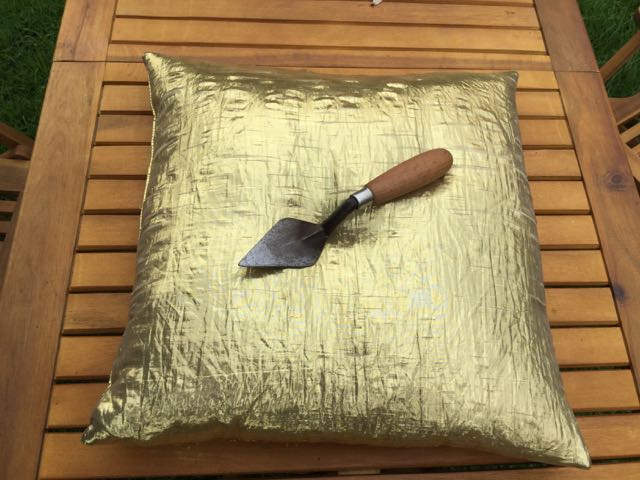
The trowel that launched a thousand ships... or maybe I'm getting mixed up with something else....
Anyway the second week in August
saw us continuing to crack on although a lot of this was continuing to
shift dirt in large quantities, ton after ton, although there was some
digging too. We are getting closer to our sea of rubble otherwise known
as 009. We also worked on removing the last of the rubble from the
western area although even with pumping it continued to be
exceptionally sticky. One plus was the discovery of the larger part of
a very elegant seventeenth century tin-glazed earthenware plate, a
really nice find.
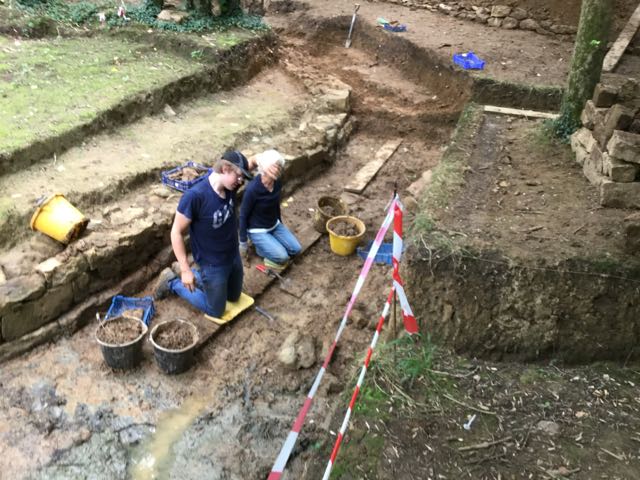
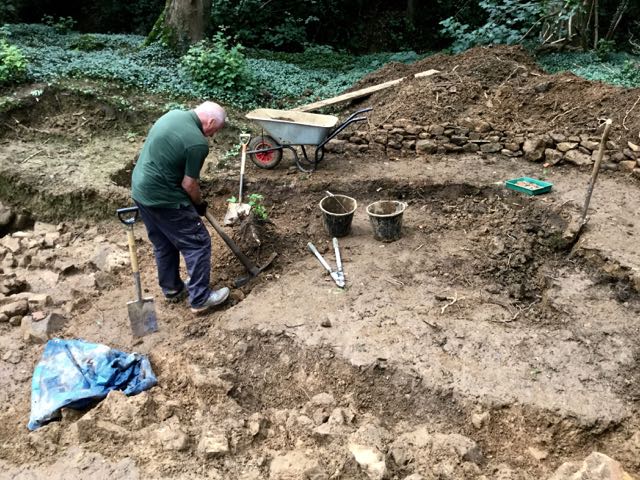
Toby and Chris stir the pudding mix whilst Peter tackles the last root.
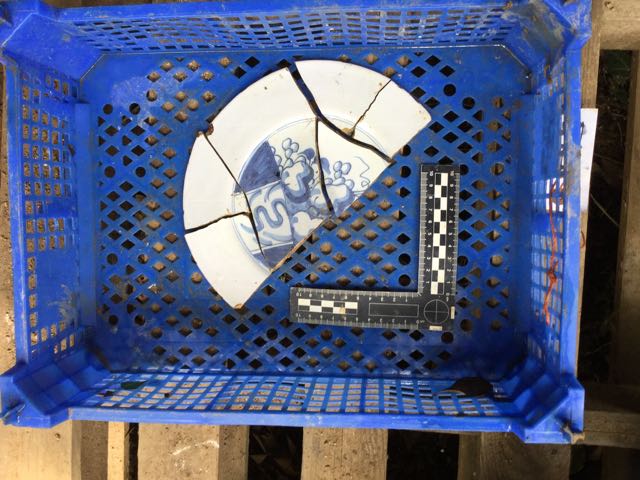
... and here's the plate, rather lovely.


Toby and Chris stir the pudding mix whilst Peter tackles the last root.

... and here's the plate, rather lovely.
As the end of
August approached serious progress had been made in lowering the levels
of the accumulated silts bringing us within striking distance of the
linking section of wall and the associated field of rubble and other
debris. Amongst this we were able to excavate the large metallic object
first flagged up by Peter S and his metal detector. It turned out to be
a lead cone which provoked loads of speculation but no clear idea what
it is, yet. A minute fragment of a bone comb was well spotted and
a first time volunteer, Meg, all the way up from Devon, managed to find
herself working on not one, not two but three garden urns all dumped
together.
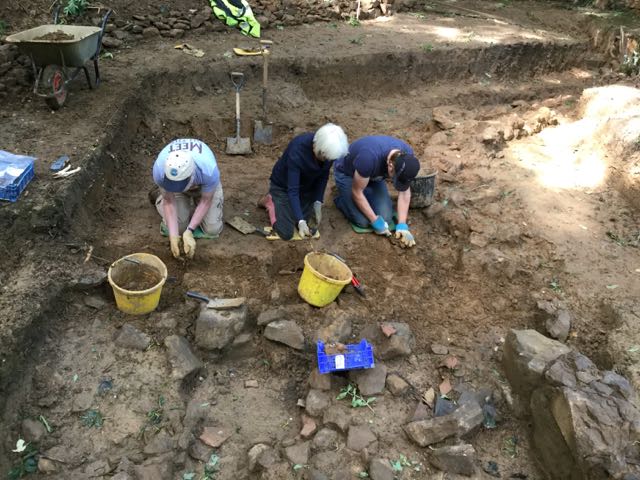
Ian, Chris and Toby get down to some serious archaeology, digging with trowels and all in a line like it ought to be
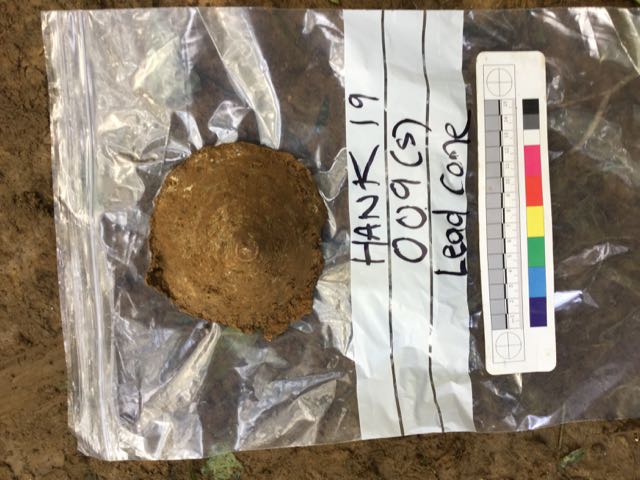
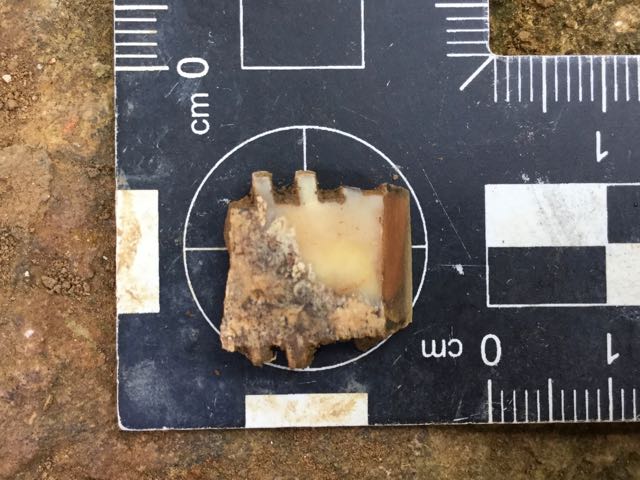
... and two fine finds: a lead thingamajig and a tiny tiny piece of bone comb
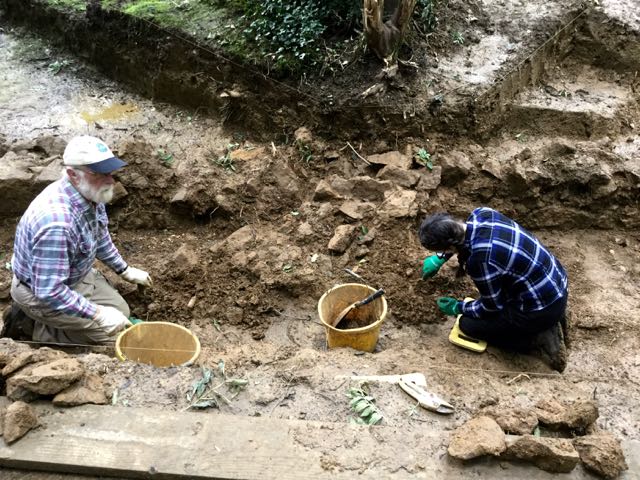
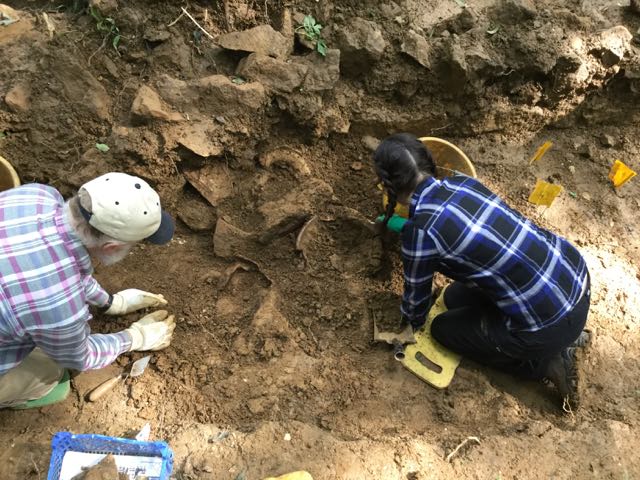
Everything then shut down for the last week in August,we had been scheduled to take a family holiday in France that week but unfortunately such was the back log of reports and what have you that had to be written up for commercial clients that the holiday was cancelled and I spent an intense ten days in the office just writing and drawing... phew. And here they are:
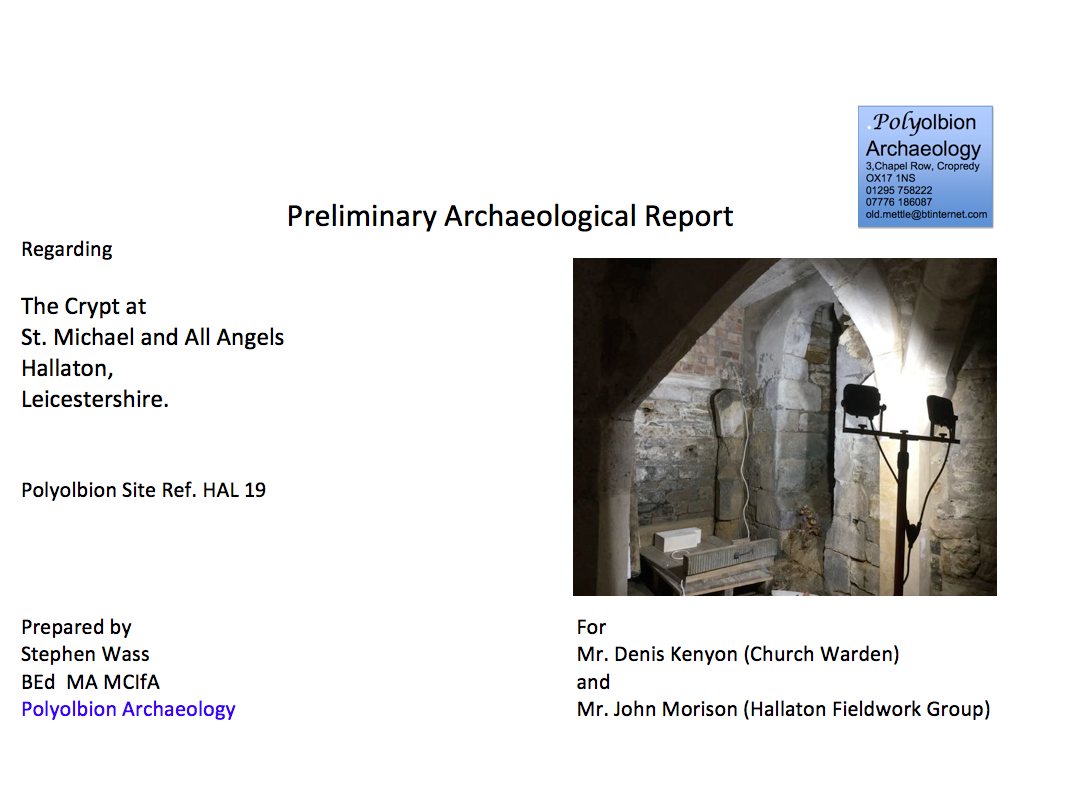
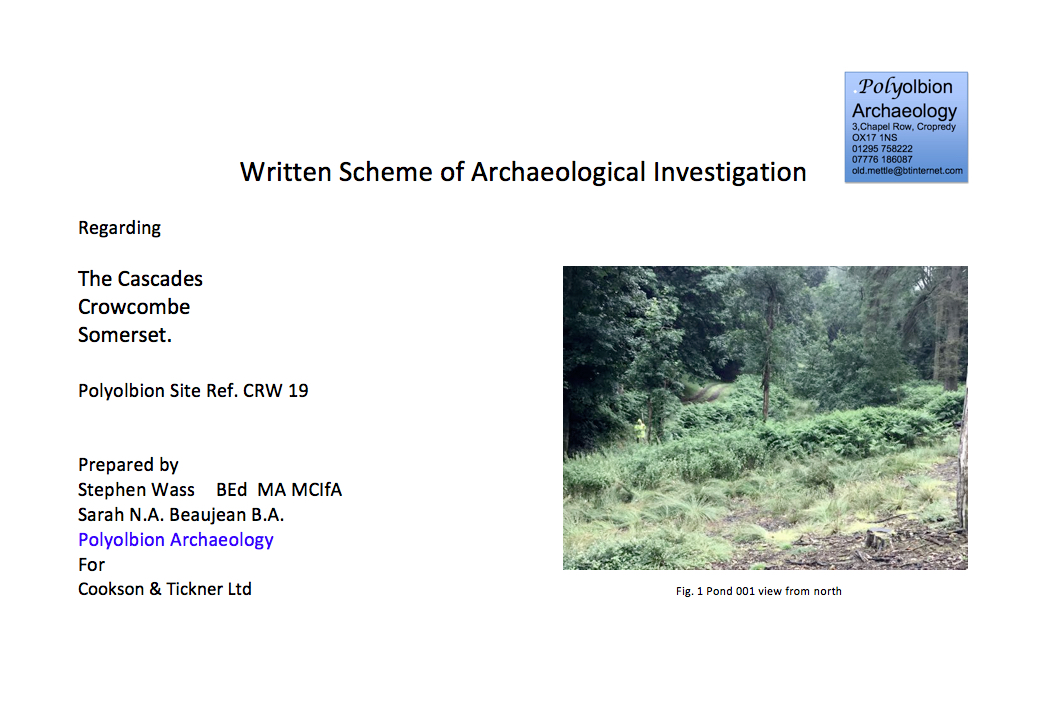
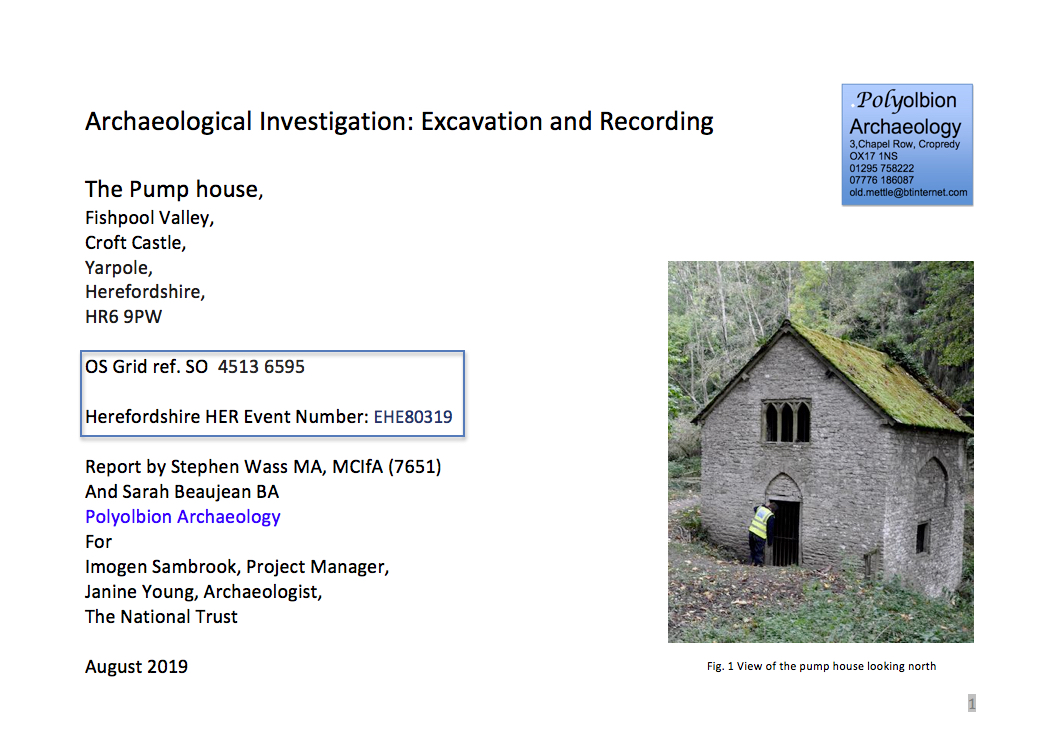
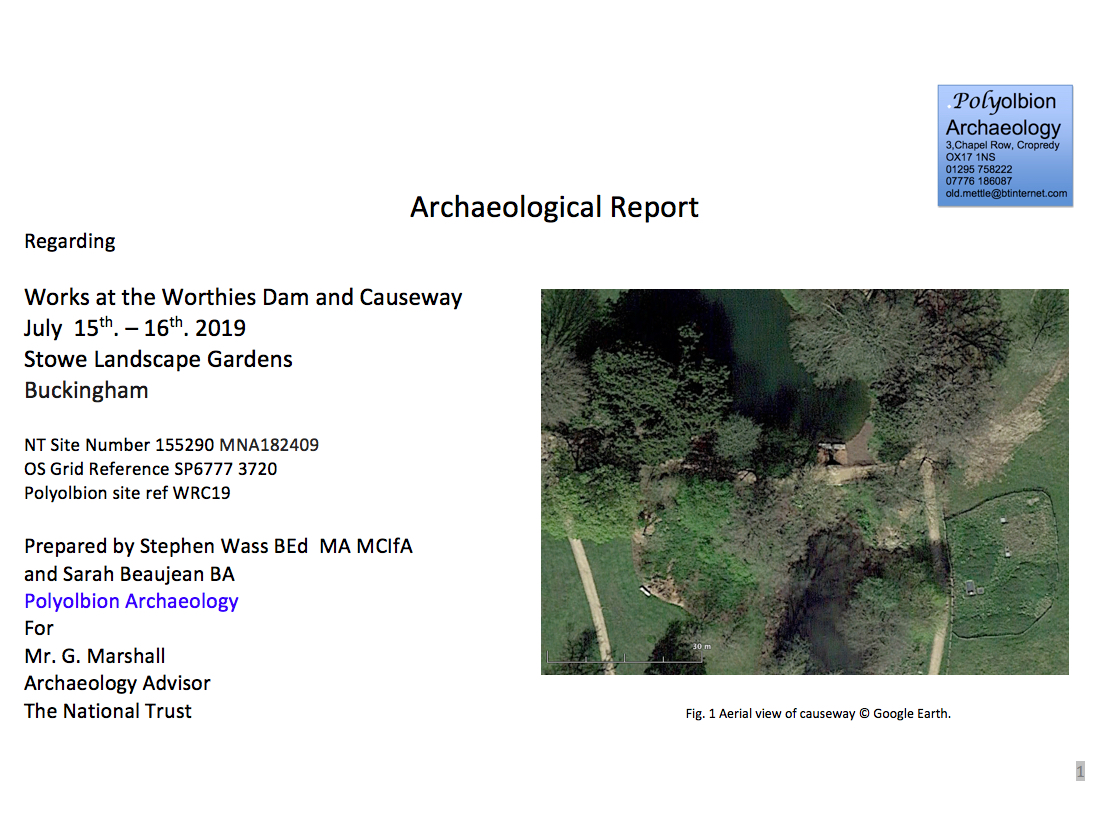
Once the writing was over it was good to get back to the trenches, we had a new volunteer, Adam and he and I with help from Peter P. made a determined effort to remove pretty well all the remaining over burden by spade and shovel before taking up out trowels to start rubble hunting which is what we did right up to the end of the month. As the rubble became increasingly well defined so did a shed load of associated finds as we made it to our 26th. garden pot plus loads of other intriguing material.
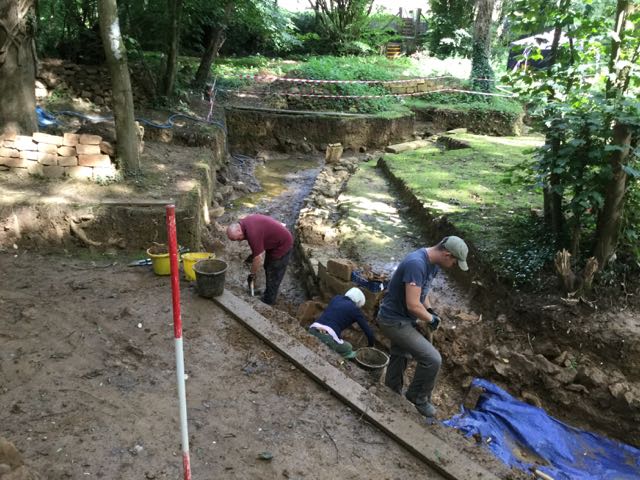
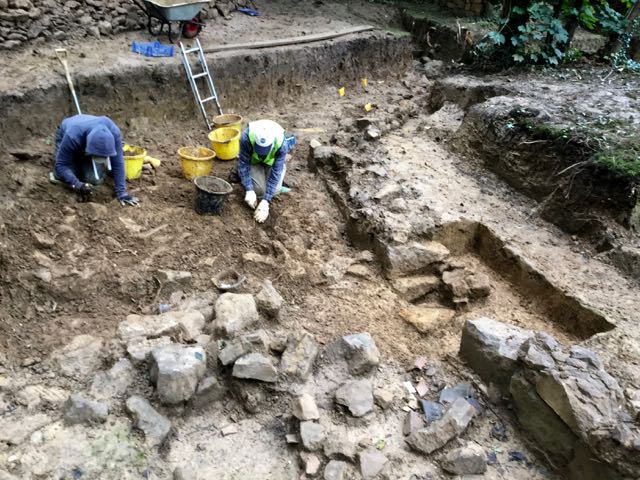
Digging away the last of the silt sometimes with spades and sometimes with trowels.
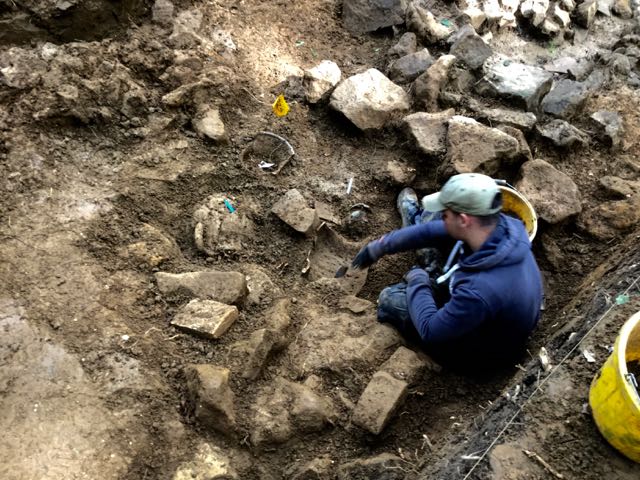
Adam contemplates a sea of pots... are there two or are there three?
A GALLERY OF FINDS
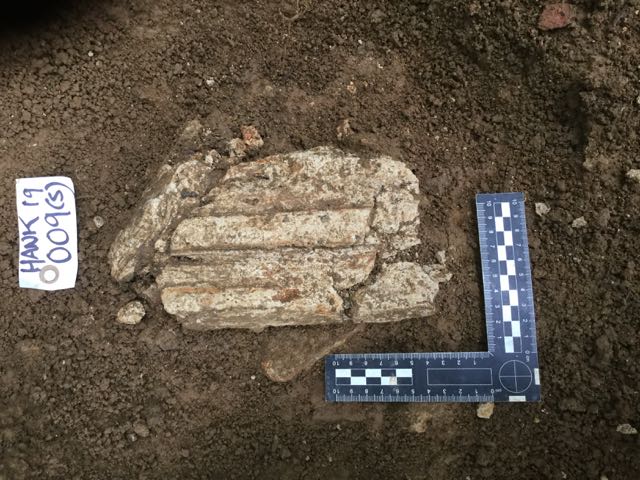
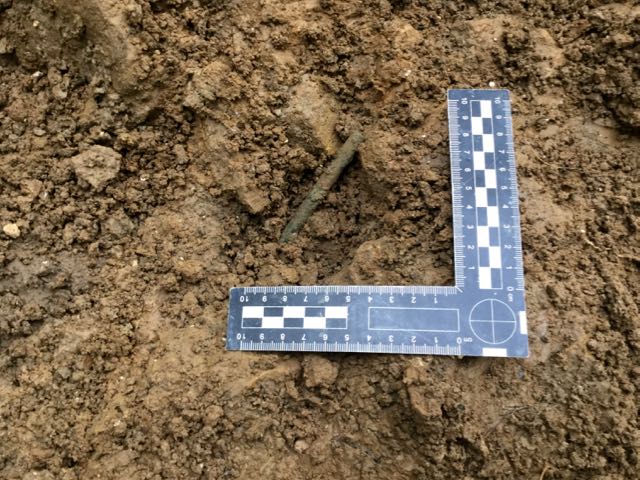
The largest chunk of wall plaster found to date. A thin copper tube, possibly a quill from an ornamental fountain.
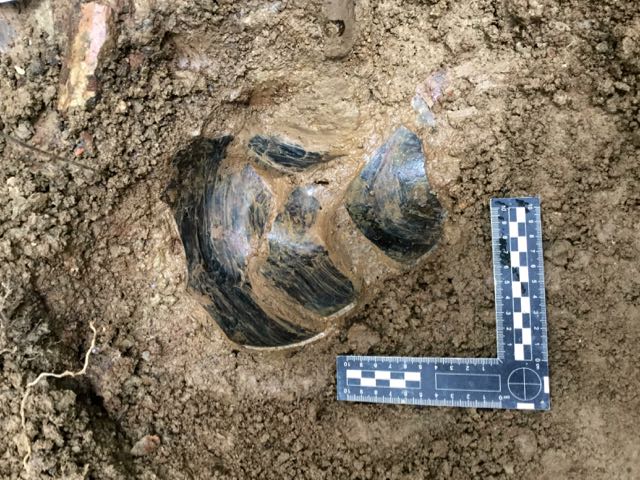
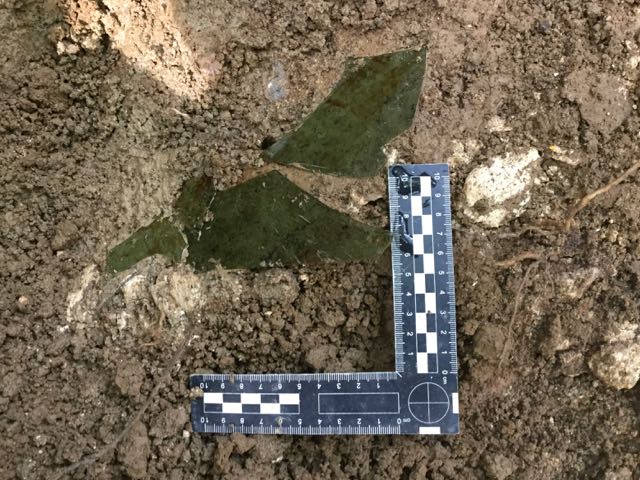
A fine glass bottle of flagon. The largest piece of window glass to date, equally fine.

Ian, Chris and Toby get down to some serious archaeology, digging with trowels and all in a line like it ought to be


... and two fine finds: a lead thingamajig and a tiny tiny piece of bone comb


Ian and Meg sort out a final patch of fallen rubble and in the process uncover pots galore.
Everything then shut down for the last week in August,we had been scheduled to take a family holiday in France that week but unfortunately such was the back log of reports and what have you that had to be written up for commercial clients that the holiday was cancelled and I spent an intense ten days in the office just writing and drawing... phew. And here they are:




Once the writing was over it was good to get back to the trenches, we had a new volunteer, Adam and he and I with help from Peter P. made a determined effort to remove pretty well all the remaining over burden by spade and shovel before taking up out trowels to start rubble hunting which is what we did right up to the end of the month. As the rubble became increasingly well defined so did a shed load of associated finds as we made it to our 26th. garden pot plus loads of other intriguing material.


Digging away the last of the silt sometimes with spades and sometimes with trowels.

Adam contemplates a sea of pots... are there two or are there three?
A GALLERY OF FINDS


The largest chunk of wall plaster found to date. A thin copper tube, possibly a quill from an ornamental fountain.


A fine glass bottle of flagon. The largest piece of window glass to date, equally fine.